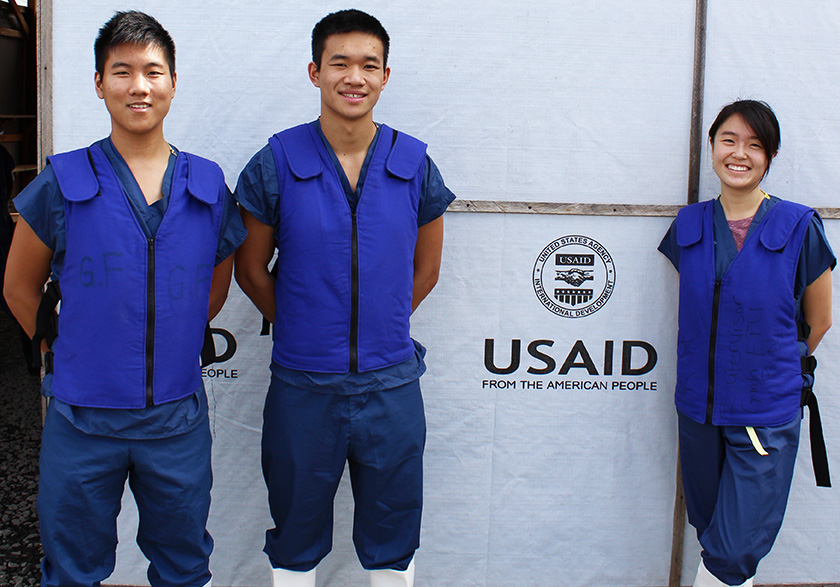Intel STS alum creating decontamination for outbreaks

Kevin Tyan, a cofounder of Kinnos and an Intel STS 2012 semifinalist, was recently recognized in Forbes’ 30 Under 30 list for the Kinnos Highlight program. The program aims to combat innefective decontamination that healthcare workers face during ongoing outbreaks. He is one of four Society alumni named to the list.
Kevin said his involvement in Intel STS contributed to his pursuit of STEM. He’s majoring in biology at Columbia University.
You were recently selected as one of Forbes 30 Under 30 in the healthcare sector. What does this recognition mean to you?
My team and I at Kinnos are incredibly humbled and honored by the recognition from Forbes. It feels like a great validation of our work to bring safer and better decontamination practices to health workers, who are often most at risk for infection. The recognition has also provided many opportunities that we hope will boost our efforts to provide Highlight to health workers worldwide. Highlight is a powdered additive that is mixed into disinfectants to improve the process of decontamination. It addresses the current flaws in spray methods to better safeguard health workers. Highlight colorizes the disinfectant for easier visibility, sticks with complete coverage, and fades in color after time to indicate when disinfection is complete. We were winners of the USAID Fighting Ebola Grand Challenge and we recently returned from a field-testing trip to Liberia.
How did you first become interested in science?
I owe a great deal of my interest in science to my high school teachers and mentors. One of my teachers in particular, Melanie Hudock, taught me both biology and anatomy. She inspired me to pursue my passion for science, which led to me working at the National Institutes of Health under Dr. Jane Trepel. There, I was introduced to immunology and oncology, fields that I am still the most passionate about.
What was your most memorable experience at Intel STS 2012?
I was humbled to be recognized as a semifinalist for Intel STS 2012. The most memorable experience I had was the interview with WUSA9/CBS. It was easily one of my most nerve-wracking experiences!
Can you describe your Intel STS research project(s)?
For my research project, I helped develop assays to study a new type of therapeutic antibody. This type of antibody drug was just starting its first-in-human phase I clinical trial for the treatment of HER2-positive cancers. The assays I developed included: a way to detect the binding of the antibody to the patient’s immune cells, which helps trigger them to kill tumor cells; a process for determining specific genetic mutations in the patients, which could predict how well they might respond to the treatment; and a method to quantify how well the antibody triggers tumor cell death.
Has your involvement in Intel STS influenced you to pursue STEM or promote STEM to others?
My involvement in Intel STS has definitely contributed to my pursuit of the STEM field. I’m currently majoring in biology at Columbia University and have been a teaching assistant at Columbia for classes like immunology and molecular biology. My future career goals remain very relevant to the type of work I did for my Intel STS project. I hope to eventually become an oncologist and to help advance the field of immunotherapy.
Do you have other STEM-related projects or goals that you’re pursuing?
Right now, Kinnos is my top priority. The recent Ebola crisis has shown that health workers are disproportionately affected during infectious disease outbreaks. With Highlight, we want to better protect those who put their own lives on the line to fight these epidemics.
What is your advice to young people interested in science and math?
My advice would be to find your particular passion in science and more importantly, find ways to pursue it. Take risks and jump at opportunities!


